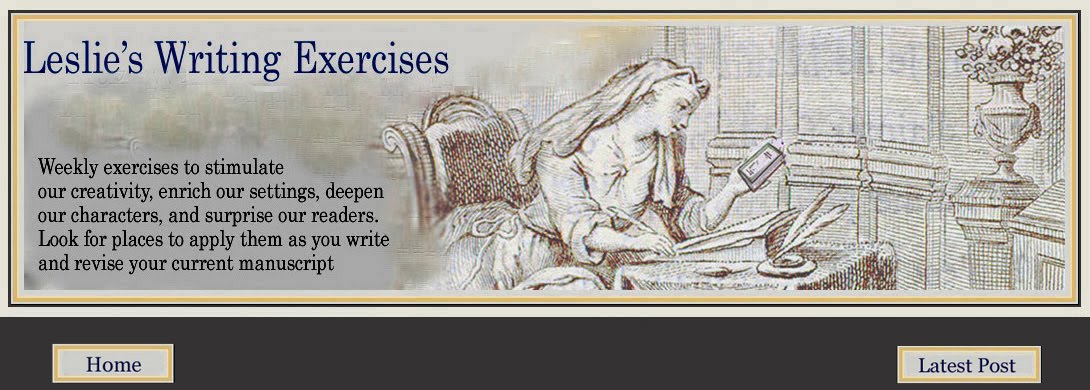***This post is the fifth in a series of eight. Through September I'll be posting weekly exercises designed to take our short stories from rough draft to finished "masterpiece"(or as close as we can get ;-) with the help of the late John Gardner and a host of other well-known authors and teachers. Click here for Part I ***
Yikes. By now I should be posting Part VI (or even VII!) of my series of short story exercises, but I’m just getting to Part V. I may need to extend my self-imposed deadline another week or so. That’s okay. The important thing is not that the story gets finished by a certain date, but that however long it takes-- through diligence, determination, and pure pleasure--the story grows and matures into the best story it can be.
One way to accomplish this is to make sure our characters’ interactions radiate heat through conflict, tension, and misunderstanding. Allison Amend, author of the chapter on dialogue in Gotham Writers’ Workshop: Writing Fiction: The Practical Guide tells us, “more often than not dialogue is a key part of [that] interaction.” You’ve no doubt heard me sing the praises of this book a time or two in this blog... Well, Amend’s chapter, “Dialogue: Talking It Up” is one of the best I’ve read on the subject and is but one more reason to get your hands on a copy now.
Dialogue is a function of character, as screenwriting guru Syd Field reminds us. Not only does dialogue need to move the story forward but it should also establish relationships, reveal the conflicts of the story and its characters, reveal the characters’ emotional states, and comment on the action: “Your first attempts will probably be stilted, clichéd, fragmented, and strained,” writes Field. “Writing dialogue is like learning to swim; you’re going to flounder around, but the more you do it, the easier it gets.”
Unlike a novel, a short story doesn’t allow time enough to dramatize every single event or to write out every line of dialogue in every conversation that our characters engage in over the course of the story’s telling, so we’ll need to choose thoughtfully. Last week we made a list of significant, turning-point incidents that will take place in our stories. This week let’s work on dramatizing them through dialogue.
As Allison Amend tells us, not every conversation needs to be dramatized in direct, line-by-line dialogue. Sometimes all we need to reveal is a gist of the conversation and we can accomplish that through summary alone (via indirect dialogue) or with a combination of both summary and scene. By way of example she offers us this passage from Tobias Wolff’s short story “Smokers” in which the author uses a mix of both direct and indirect dialogue, sparing the reader “a monotonous conversation, but [giving us] the most important information… in a most economical fashion”:
Writes Amend: “Here we get the gist of the conversation, but then, on an especially significant line, we get the actual quote.” She continues, “So, in addition to asking yourself if a moment should be dialogued or not, you can also ask yourself if direct or indirect dialogue is the best choice for that particular moment.”
Study Amend’s chapter on dialogue to learn lots more: dialogue conventions, the illusion of reality, subtext, dialect, stage direction in dialogue, character and dialogue, bad dialogue... You won’t be disappointed.
One more word on dialogue that I’m sure you’ve already heard over and over but is worth keeping in mind as we begin to craft those passages of dialogue in our stories: Subtext. John Gardner, our mentor for this series of exercises, reminds us to “make our dialogue crackle with feelings not directly expressed. Remember that in dialogue, as a general rule, every pause must somehow be shown, either by narration (for example, “she paused”) or by some gesture or other break that shows the pause. And remember that gesture is a part of all real dialogue. Sometimes, for instance, we look away instead of answering.”
Interviewed by Sarah Anne Johnson for The Glimmer Train Guide To Writing Fiction: Building Blocks, author Amy Bloom talks about “writing below the surface”:
Finally, an important note on subtext from Allison Amend:
Allison Amend: “Dialogue: Talking it Up” Gotham Writers’ Workshop: Writing Fiction: The Practical Guide
Syd Field: Screenplay: The Foundations of Screenwriting
John Gardner: The Art of Fiction
Amy Bloom: interviewed in The Glimmer Train Guide to Writing Fiction: Building Blocks





No comments:
Post a Comment
Thanks for sharing your thoughts...